Luckily, the German capital offers many fantastic educational visits that are completely free of charge! Here are some of our favourites:
Bundestag Dome
Although a time slot does need to be booked in advance, it is completely free to visit the Bundestag Dome, and this is a must-do on a school trip to Berlin.
The spectacular glass and metal dome offers incredible views over the Berlin cityscape. Designed by architect Norman Foster, it symbolises the reunification of Germany and is one of the city’s most prominent landmarks.
From inside the dome, you can also see into the debating chamber of Germany’s parliament, so this is also a great visit if you want to inspire an interest in politics in your students!
The dome was designed to be both environmentally friendly and energy efficient, funnelling sunlight into the building to lessen the need for artificial light. The dome also has a large sun shield, which tracks sunlight and stops direct sunlight that could cause large solar gain and dazzle anyone below it.
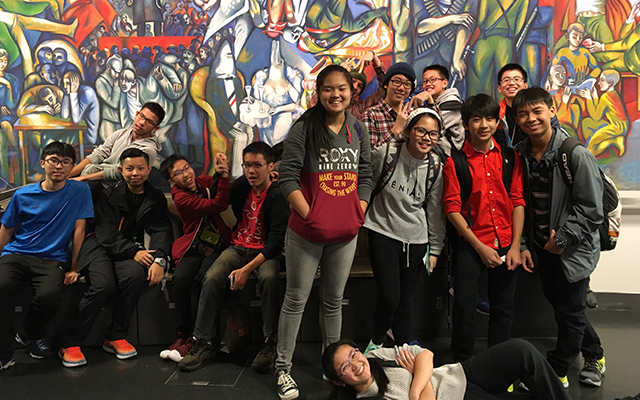
The East Side Gallery
Whether you’re visiting Berlin for history, German, the Christmas markets or art, you absolutely must take the time to visit the famous East Side Gallery.
This open-air gallery is on the longest surviving inner section of the Berlin Wall and is located between the Ostbahnhof and the Oberbaumbrücke.
Your students will be fascinated by the murals painted here by 118 artists from 21 countries in response to the political changes of 1989 – 1990. They certainly capture the mood of hope and offer plenty of opportunities for discussions about the art and the politics of the time.
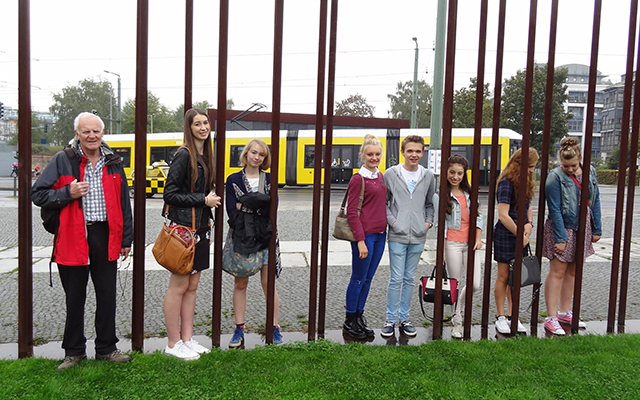
The Berlin Wall Memorial
The Berlin Wall Memorial is another popular visit in Berlin that happens to be completely free to visit. Located on Bernauer Strasse, the memorial commemorates the division of Berlin by the Berlin Wall, as well as all the people who lost their lives there.
The memorial includes an outdoor exhibition, a visitor centre and documentation centre, and a chapel of reconciliation. The outdoor exhibition includes a 70m section of the Berlin Wall, including a watchtower and will help students to understand how the border between East and West Berlin was in the 1980s.
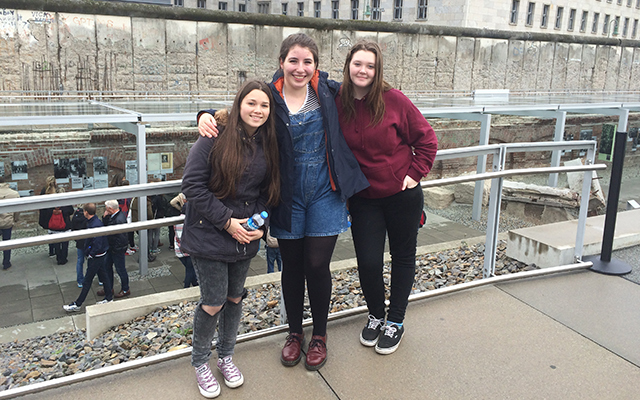
Topography of Terror
If your group is studying the Nazis and the Holocaust, then you’ll definitely want to include a visit to the Topography of Terror in your itinerary.
This museum is housed on a site which was the epicentre of Nazi terror and persecution – at various times it was the SS Reich Security Main Office, and the headquarters of the Sicherheitspolizei, the SD, the Einsatzgruppen and the Gestapo.
Here, your students will learn more about how terror was integral to Nazism. And they’ll discover the personal stories of some of those who were considered opponents of the Nazi regime.
And running alongside the Topography of Terror is the largest surviving section of the outer Berlin Wall.
Haus der Wannsee Konferenz
On 20th January 1942, 15 high-ranking Nazis gathered here to agree the arrangements for the Final Solution – the deportation and systematic murder of the Jews of Europe.
Here, your students will see how almost every part of the Nazi machine was complicit in this genocide. They’ll learn more about anti-Semitism and racism in Germany in the 1920s, and they’ll see a variety of Nazi propaganda.
Your students will be shocked that such a terrible event took place in what is, ostensibly, a serene lakeside villa.
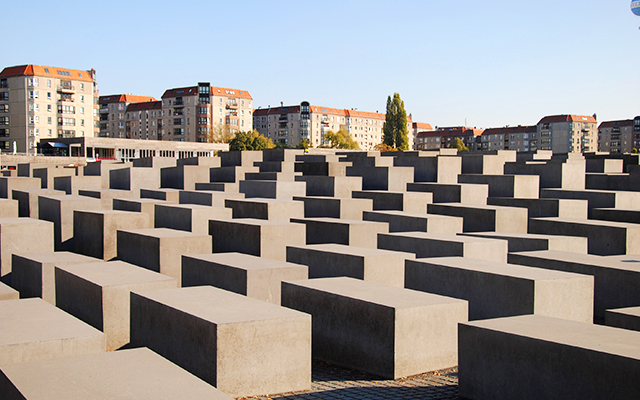
Memorial to the Murdered Jews of Europe
The Memorial to the Murdered Jews of Europe is another visit that is a must-do on any school trip to Berlin.
This huge memorial consists of 2,711 concrete slabs and is right next to the Tiergarten and close to the Reichstag and Brandenburg Gate.
As you walk between the slabs, all of which are different heights, you’ll notice that the ground undulates, which leads to a rather uneasy feeling. All of this is designed to give the visitor the opportunity to consider the memory of the Holocaust in their own personal way.
Below the memorial is an information centre containing more information on the victims of the Holocaust.
The State Museums/Museum Island
You will need a reservation, but it is free to visit the State Museums, including those on the famous Museum Island in central Berlin.
Museum Island is a UNESCO World Heritage Site, and is home to the Altes Museum, the Neues Museum, the Alte Nationalgalerie, the Bode Museum and the Pergamon Museum.
These museums contain incredibly important works of art and significant collections of Classical antiquities and are well worth a visit on your school trip to Berlin.
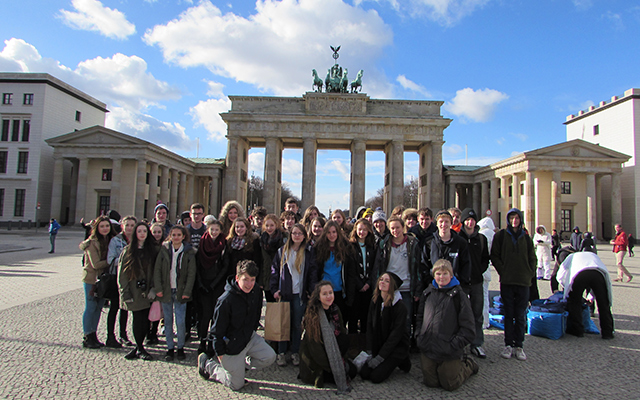
Brandenburg Gate
The ultimate spot for a Berlin photo opportunity, the Brandenburg Gate is the most iconic monument in Berlin.
It was built in the late 18th century and was inspired by the monumental gateway to the Acropolis in Athens.
During the Cold War, the Brandenburg Gate was within the Soviet sector and when the Berlin Wall was erected in 1961, it became inaccessible. It’s now a potent symbol of the reunification of Germany thanks to the celebrations held here in 1989 when the Wall fell.
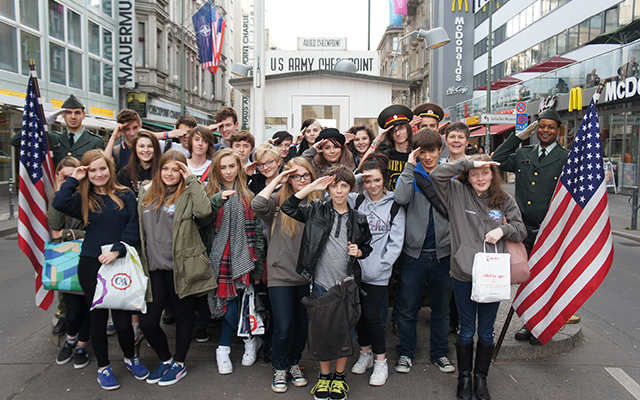
Checkpoint Charlie
While you will need to pay an entrance fee to go into the museum at Checkpoint Charlie, it’s completely free to go and see the former border crossing, with its barrier, checkpoint booth, flag and warning sign, and even take a photo with the ‘soldiers’ stationed there.
Checkpoint Charlie was the most famous crossing point between East and West Germany and, in 1961, it was even the scene of a tank confrontation between the Americans and Soviets.
Otto Weidt Museum
Otto Weidt owned a small factory in Berlin that made brooms and brushes. During the war, he employed mostly deaf and blind Jews, and made great efforts to try to protect his employees from the persecution being perpetrated by the Nazis, including hiding them in the workshop that is now home to the museum.
Your students will learn more about Otto Weidt and the drastic measures he took to protect his workers. They’ll also hear the personal stories of those he saved.
For students who have been exploring the horrendous persecution of Jews by the Nazis, a visit to this museum will show them that there were those who wanted to help them and may help to restore a little of their faith in humanity.
Sachsenhausen Concentration Camp Memorial
A short trip to nearby Oranienburg will give your students the chance to visit the Sachsenhausen Concentration Camp Memorial. Entry is free and a self-guided tour is very easy – please note that guided tours and audio guides do incur additional costs.
Sachsenhausen was built in 1936 as an ‘ideal concentration camp’ and this, along with its proximity to Berlin, meant that it was given a special status and used to train SS guards.
It’s estimated that more than 200,000 people were imprisoned at Sachsenhausen between 1936 and 1945. The prisoners were forced to work various factories and workshops, including brickworks supplying the giant building projects being carried out by the Nazis in Berlin.
Sachsenhausen was used to help the Nazis perfect their killing techniques. They needed to find a way to kill large numbers of people without causing too much of an initial panic that made the internees hard to control. And so, the camp played an important role in the development of gas vans and chambers.
After the Soviets liberated the camp in 1945, it became a prison for political prisoners and students can learn more about this period too.
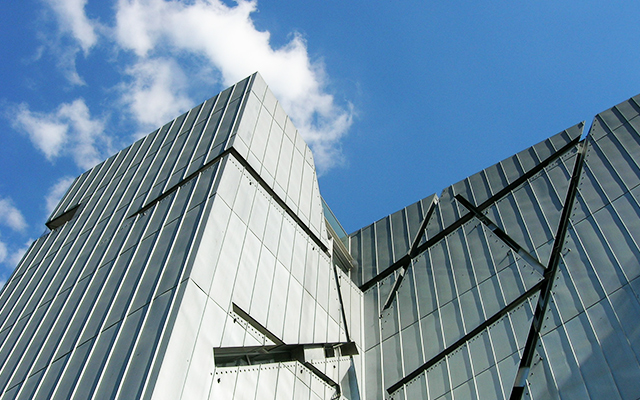
The Jewish Museum
The fantastic Jewish Museum is also free to enter, although guided tours do incur a fee.
The largest Jewish museum in Europe, the museum chronicles the history of the Jewish community in Germany from the Middle Ages, which will help students to better understand the social context in which the Nazis rose to power and perpetrated the Holocaust.
The museum’s architecture itself is worth taking in. You enter through the 18th century Kollegienhaus, before going into the modern Libeskind Building, which consists of three corridors that represent different aspects of Jewish life in Germany – exile, Holocaust and continuity. Empty voids within the building are designed to remind visitors of the void that the Holocaust has caused.
Tränenpalast
This museum was once a border crossing between East and West Berlin for those travelling by S-bahn, U-bahn and train. It was called the Tränenpalast, or Palace of Tears, because of the tearful goodbyes that took place in front of it, as Western visitors said farewell to East German residents who were not permitted to cross.
Your students will be able to experience what it was like to cross from East to West Berlin, discovering more about the checkpoint procedures. And they’ll discover the personal stories of those who lived in divided Berlin.
The museum also covers the process of the reunification of Germany and so is of particular interest to groups learning about the end of the Cold War and communism in Europe.
Everyday Life in the GDR Museum at the Kulturbrauerei
If you want your students to explore life in East Germany but don’t want to pay the entrance fee for the DDR Museum, then this free museum is an excellent alternative.
The museum showcases daily life in the GDR during the 1970s and 1980s – you can sit in an East German tavern, explore a typical East German living room and find out about working life in the GDR.
Ready to start planning your school trip to Berlin?
Please don’t hesitate to contact us for further information or to request your tailor-made quote.